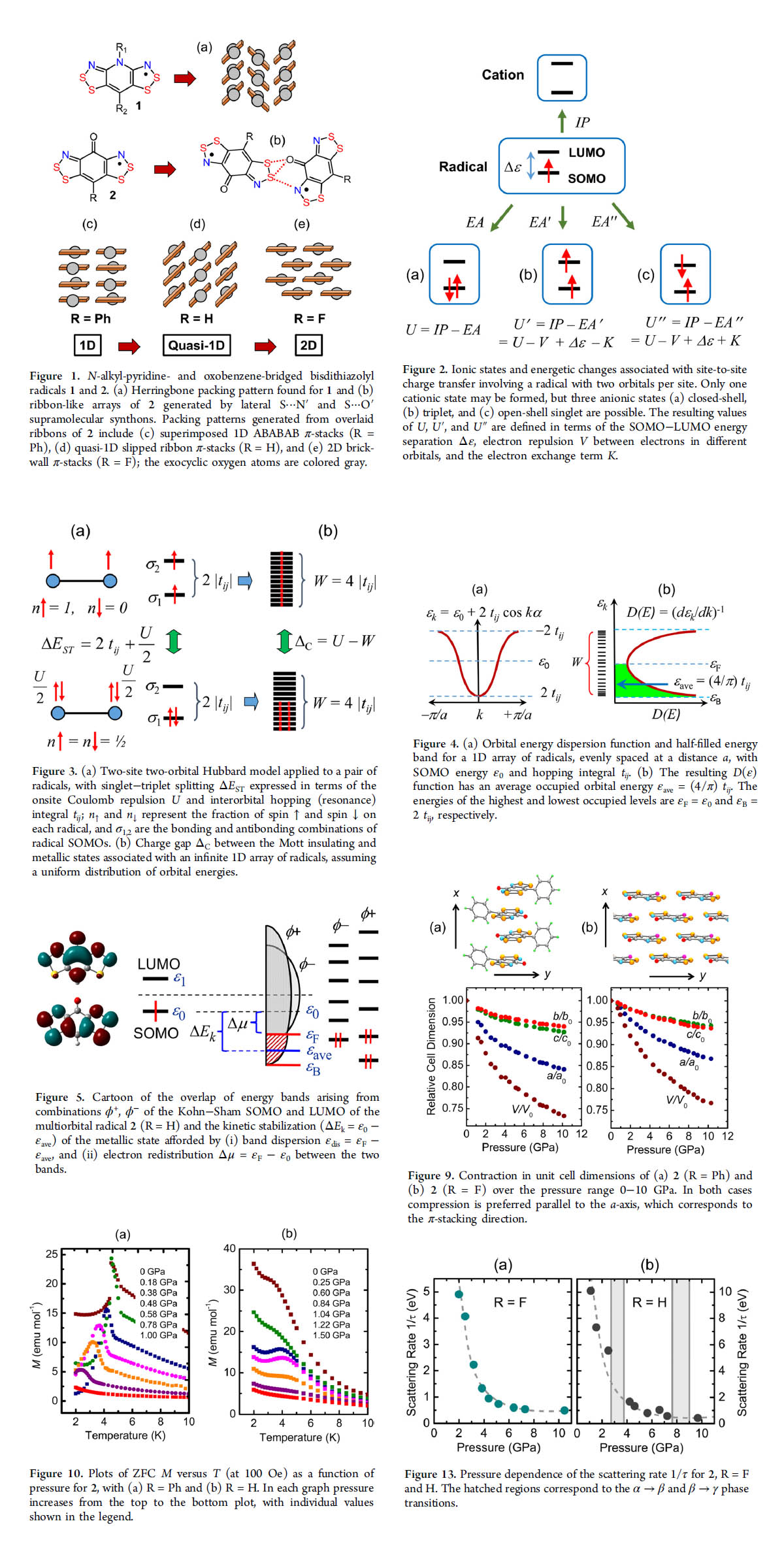尺寸、压力和多轨道对中性自由基导体金属态的影响
(The Metallic State in Neutral Radical Conductors: Dimensionality, Pressure and Multiple Orbital Effects)
D. Tian, S. M. Winter, A. Mailman, J. W. L. Wong, W. J. Yong, H. Yamaguchi, Y. T. Jia, J. S. Tse, S. Desgreniers, R. A. Secco, S. R. Julian, C. Q. Jin, M. Mito, Y. Ohishi and R. T. Oakley
J. Am. Chem. Soc., 137, 14136 (2015)
Pressure-induced changes in the solid-state structures and transport properties of three oxobenzenebridged bisdithiazolyl radicals 2 (R = H, F, Ph) over the range 0~15 GPa are described. All three materials experience compression of their π-stacked architecture, be it (i) 1D ABABAB π-stack (R = Ph), (ii) quasi-1D slipped π-stack (R = H), or (iii) 2D brick-wall π-stack (R = F). While R = H undergoes two structural phase transitions, neither of R = F, Ph display any phase change. All three radicals order as spin-canted antiferromagnets, but spin-canted ordering is lost at pressures <1.5 GPa. At room temperature, their electrical conductivity increases rapidly with pressure, and the thermal activation energy for conduction Eact is eliminated at pressures ranging from ~3 GPa for R = F to ~12 GPa for R = Ph, heralding formation of a highly correlated (or bad) metallic state. For R = F, H the pressure-induced Mott insulator to metal conversion has been tracked by measurements of optical conductivity at ambient temperature and electrical resistivity at low temperature. For R = F compression to 6.2 GPa leads to a quasiquadratic temperature dependence of the resistivity over the range 5?300 K, consistent with formation of a 2D Fermi liquid state. DFT band structure calculations suggest that the ease of metallization of these radicals can be ascribed to their multiorbital character. Mixing and overlap of SOMO- and LUMO-based bands affords an increased kinetic energy stabilization of the metallic state relative to a single SOMO-based band system.

